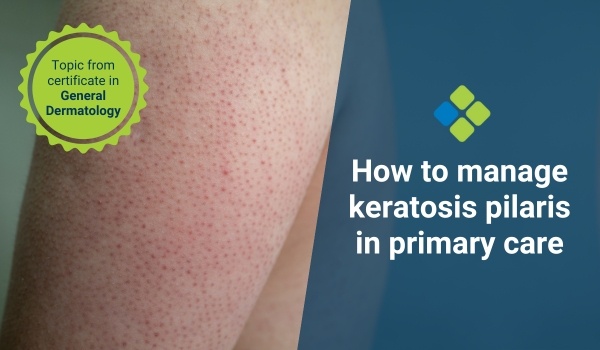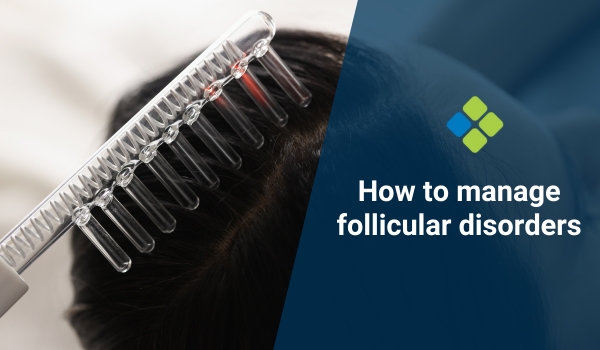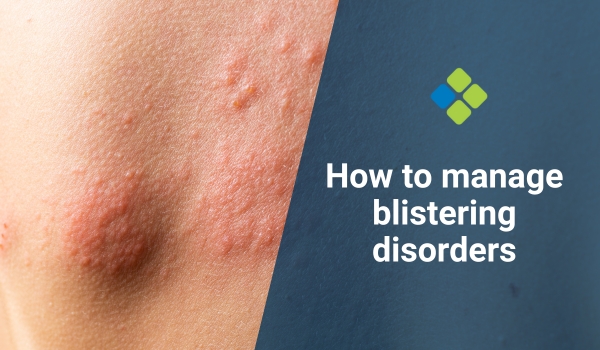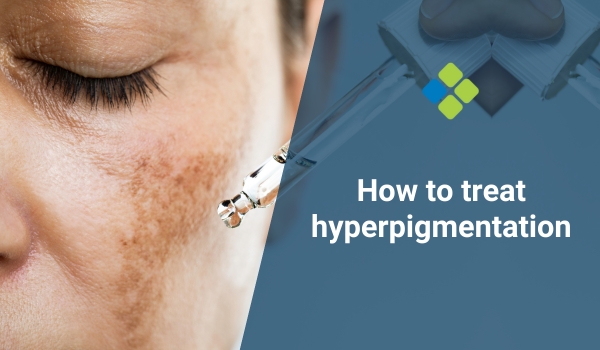How to manage keratosis pilaris in primary care
Read about the causes, presentation and treatment of keratosis pilaris, including skincare, patient education, lifestyle modifications and topical therapy.

HealthCert Education
Keratosis pilaris is a common skin condition characterised by small, rough, folliculo-centric papules ("chicken skin"). It typically affects the upper arms, thighs, cheeks, and buttocks. Keratosis pilaris is usually harmless, but it can be a cosmetic concern for many patients. GPs can typically can manage the condition effectively by combining appropriate treatments, patient education, and lifestyle modifications.
What causes keratosis pilaris?
Keratosis pilaris results from the buildup of keratin—a protein that protects the skin from infections and other harmful things. The excess keratin forms a scaly plug that blocks the hair follicle, causing the characteristic bumps.
The condition often first appears in childhood and may worsen during adolescence. However, it may also sometimes improve with age. It is associated with atopic dermatitis and ichthyosis vulgaris. Seasonal variations are also common, with symptoms often exacerbating in winter due to lower humidity.
Clinical presentations and diagnosis
Keratosis pilaris is diagnosed clinically. Key features include a symmetrical distribution of small, rough, and red (or skin-colored) bumps. These are usually present on the upper arms, thighs, cheeks, and buttocks. The changes are also often associated with mild erythema and dryness.
A thorough patient history and physical examination are typically sufficient. Additionally, dermoscopy can aid in visualising the follicular plugs. No biopsy or additional diagnostic tests are usually required unless the presentation is atypical.
Treatment strategies
The treatment for keratosis pilaris usually involves a combination of:
- Skincare routine
- Patient education
- Lifestyle modifications, and
- Topical treatments
Skincare routine
Daily use of emollients helps to keep the skin hydrated and reduce roughness. Recommended moisturisers often contain urea, lactic acid, or alpha-hydroxy acids (AHAs) to help exfoliate and soften the skin.
The use of mild, soap-free cleansers is recommended to avoid further skin irritation. Hot showers should be avoided as they can exacerbate dryness.
Regular, gentle exfoliation can help remove the keratin plugs. Physical exfoliants can be used, but chemical exfoliants containing salicylic acid or AHAs may be more effective and less irritating.
Patient education
Educating patients about the benign nature and chronicity of keratosis pilaris is crucial. Affected individuals should understand that the condition cannot be cured, but its appearance can be managed with consistent care.
Lifestyle modifications
Using humidifiers, especially during winter, and wearing loose clothes can help maintain skin moisture and minimise irritation.
Topical treatments
Keratolytics - Topical agents such as urea (10-40%), lactic acid (12%), or glycolic acid (5-12%) help to break down the excess keratin and smoothen the skin.
Retinoids - Topical retinoids (e.g., tretinoin, adapalene) can help by promoting cell turnover and preventing follicular plugging. However, they can cause irritation and are usually reserved for more severe cases.
Managing keratosis pilaris in primary care involves a holistic approach focusing on patient education, consistent skincare, and appropriate use of topical treatments. By setting realistic expectations and personalising the care plan, GPs can help patients manage this common skin condition, improving their skin health and quality of life. Regular follow-up and adjustments to the treatment regimen are key to achieving the best outcomes.
– Dr Rosmy De Barros
For further information on this topic, you may be interested to learn more about the HealthCert online Professional Diploma program in General Dermatology.
Engaging with this blog can help meet your annual
|

How to claim your CPD hoursIf you consume educational webinars, podcasts, articles, or research on this blog, you can Quick Log CPD hours with the RACGP via the usual self-submission process. You will be asked to reflect on what you have learned, and you will require supporting evidence such as a screenshot.Download the RACGP’s guide to self-recording your CPD here. |
Read another article like this one: How to manage heat rash
References
- Pennycook KB, McCready TA. Keratosis Pilaris. In: StatPearls. Treasure Island (FL): StatPearls Publishing; June 26, 2023.
- Wang MA, Wilson A, Murrell DF. A Review of the Scoring and Assessment of Keratosis Pilaris. Skin Appendage Disord. 2023;9(4):241-251. doi:10.1159/000529487
- McCormick E, Nussbaum D, Friedman A, Pham H, Meckfessel MH, Emesiani C. Evaluation of a Moisturizing Cream with 20% Urea for Keratosis Pilaris. J Drugs Dermatol. 2024;23(1):1274-1277. doi:10.36849/JDD.7806
- Kodali N, Patel VM, Schwartz RA. Keratosis pilaris: an update and approach to management. Ital J Dermatol Venerol. 2023;158(3):217-223. doi:10.23736/S2784-8671.23.07594-1

 1800 867 1390
1800 867 1390






